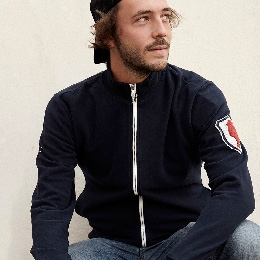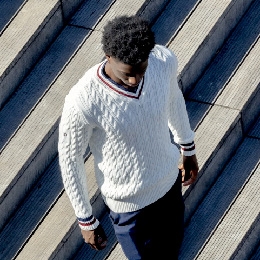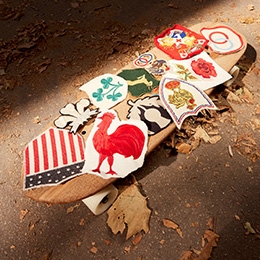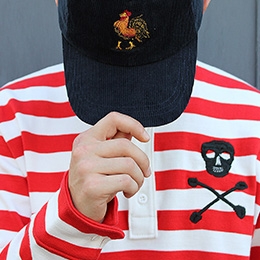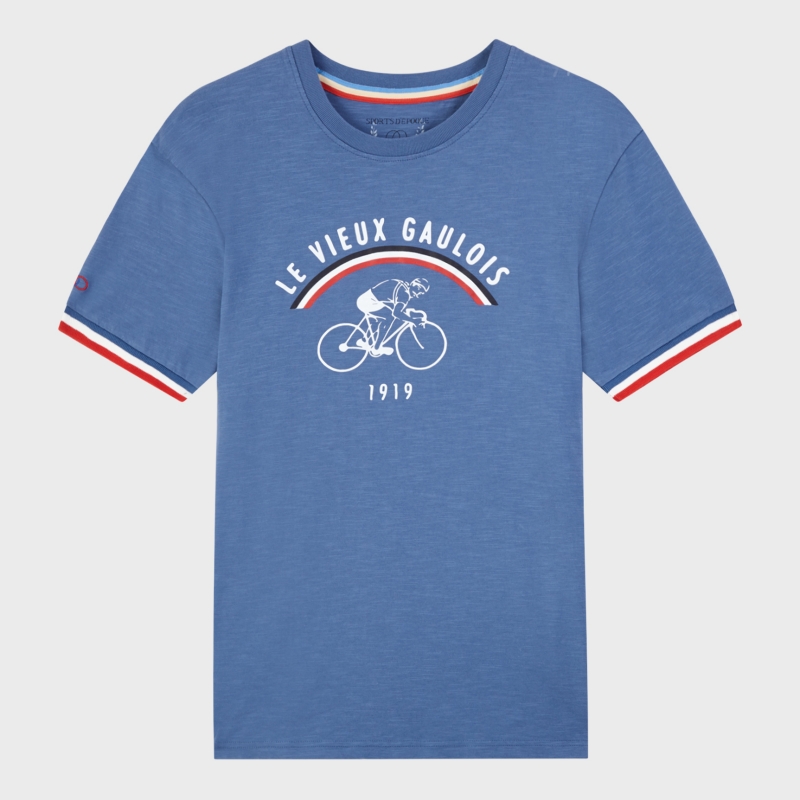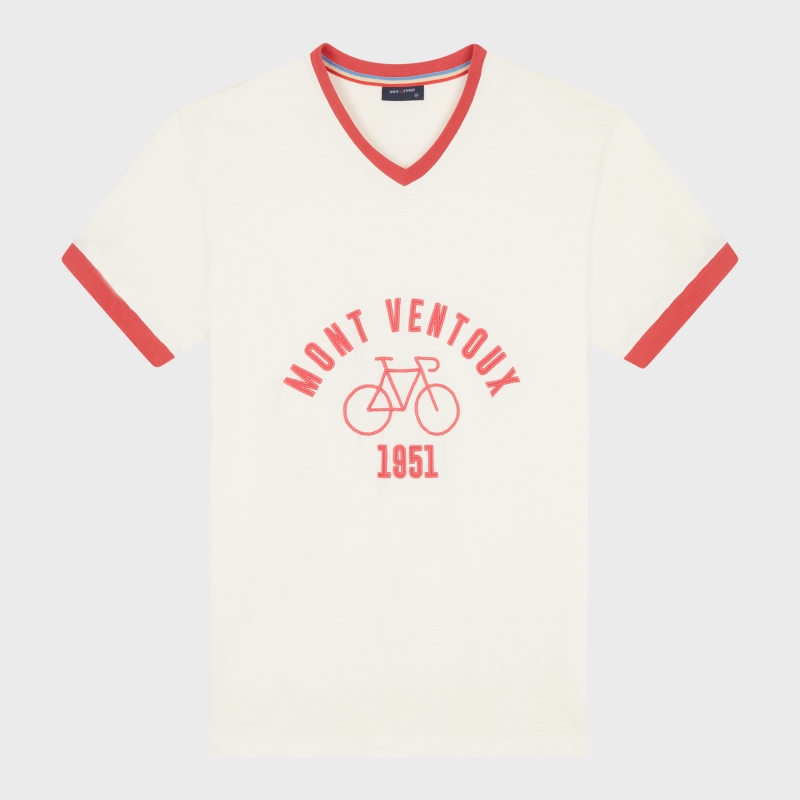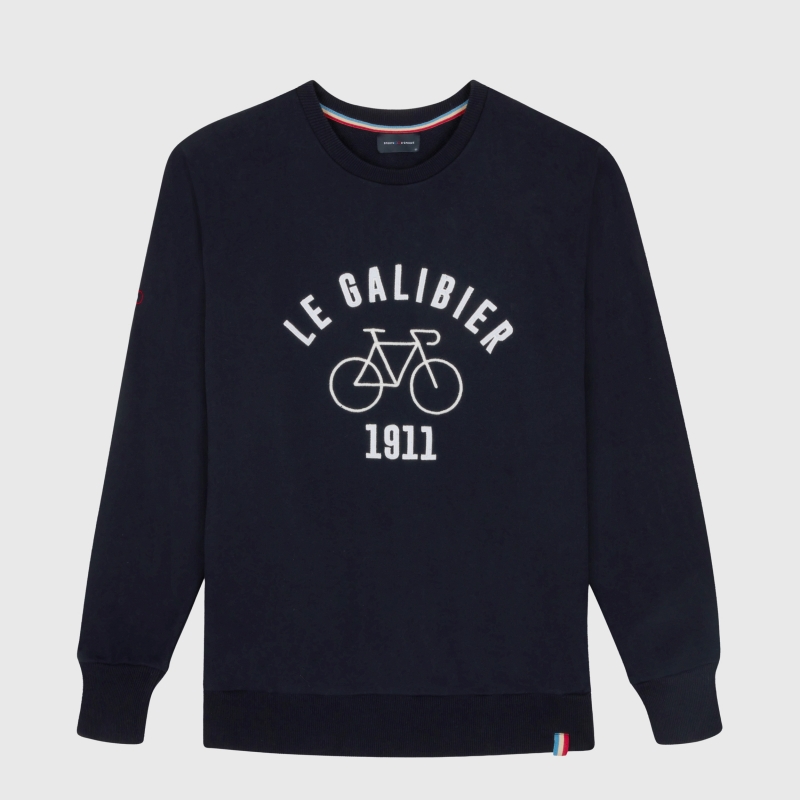Blog - Velocipedia
SPORTS AND HISTORICAL ANECDOTES,
TO SHINE IN SOCIETY
Velocipedia
1919 - 2019: WHO WAS THE FIRST
MAN IN YELLOW?
In 1919, Eugène Christophe was the very first to don the overall leader's jersey. Nicknamed "le vieux Gaulois" in reference to the moustache he wore at the start of his career, Eugène Christophe is also famous for his immense bad luck and courage.
Indeed, he broke his fork 3 times in his racing career! The rules at the time, requiring riders to repair broken forks alone and unaided, made victory virtually impossible. So, he never won the holy grail.
WHAT DID THE FIRST RACERS WEAR?
At the end of the 19th century, racers chose their emblems, colors, jersey shapes and materials. Catalogs would feature jerseys with clovers for nature lovers, imaginary animals for dreamers and butterflies for poets!
WHO WAS THE FIRST CHEATER?
The first cheats appeared on the Grand Loop as early as 1904 (the Tour having been created in 1903!). The rider Pierre Chevalier, who quickly fell behind on the first stage, arrived a little out of breath in third place.
He had travelled part of the way in his car and was suspended for life. The final winner, Henri Cornet, owed his victory to the disqualification of the first 4 runners!
IS IT REALLY FROM CYCLING YOU GET
"PEDAL IN THE SAUERKRAUT"?
A priori, yes. Pedaling in ‘sauerkraut’, or pedaling in vain, is thought to have originated in the first big loops. The broom wagon, which closes the race and picks up riders who drop out, is said to have had billboards advertising sauerkraut brands!

THE COL DU GALIBIER IS ONE
OF THE HIGHEST ROAD PASSES IN THE ALPS
It has been a mythical pass for racing cyclists and cycle tourists since 1911, when it was first climbed in a race and only one rider reached the summit without setting foot on the ground.
The Galibier can be approached from Savoie, from Saint Jean-de-Maurienne via the Col du Télégraphe, or from the south via the Col du Lautaret. In both cases, the ascent involves more than 30 kms of climbing.
Since 1911, it has been raced more than 70 times, with finishes often judged at the foot of the descent, in Valloire or Briançon, for example. A century after the first ascent, in 2011, a summit finish was judged there for the first time.
Over the years, technical advances in bicycles have made the Galibier accessible to cycle tourists. As a result, the Galibier Challenge is now organized every year. It is open to all men and women over the age of 17.
WHO WAS "LE VIEUX GAULOIS"?
Nicknamed "le vieux Gaulois" in reference to the moustache he wore at the start of his career, Eugène Christophe is also famous for his immense bad luck and courage. Indeed, he broke his fork 3 times in his racing career!
The rules at the time, requiring riders to repair broken forks alone and unaided, made victory virtually impossible. So, he never won the holy grail, but he was the very first rider to wear the overall leader's jersey, in 1919.
THE FAMOUS "SPORT DIRECTORS"
Their role emerged when race organizers changed the competition format from individual to team racing. Of course, car models have evolved over time, as has the way team managers communicate, notably with the famous earpiece.
The sport director's role is not simply to answer the biker's microphone with a smile, or to shout encouragement, but to be a strategic facilitator and staff coordinator. Often a former racer, the ‘directeur sportif’ is accompanied in his cars by team-mates, ready to intervene in the event of any technical, food or clothing problems.
THE GIANT OF PROVENCE
Culminating at 1910 meters, it dominates the surrounding plains. The paths once trodden by shepherds have given way to three main routes. The most emblematic ascent is from the south.
Starting from the village of Bedouin, the 21.6-kilometre ascent with its 1,600-metre vertical drop has been the scene of legendary feats by some of history's greatest racing cyclists. The first timed ascent took place in 1908. Gabriel Jacques took 2 hours and 29 minutes to reach the summit. Since 2004, the current record of 55 minutes and 51 seconds is held by Spain's Iban Mayo.
Since 1951, a number of stage races have used Mont Ventoux as a judge of the peace. Created in 2019, the Mont Ventoux Dénivelé Challenge is a one-day event reserved for professionals. The day before, the same route is used by cyclotourists.




